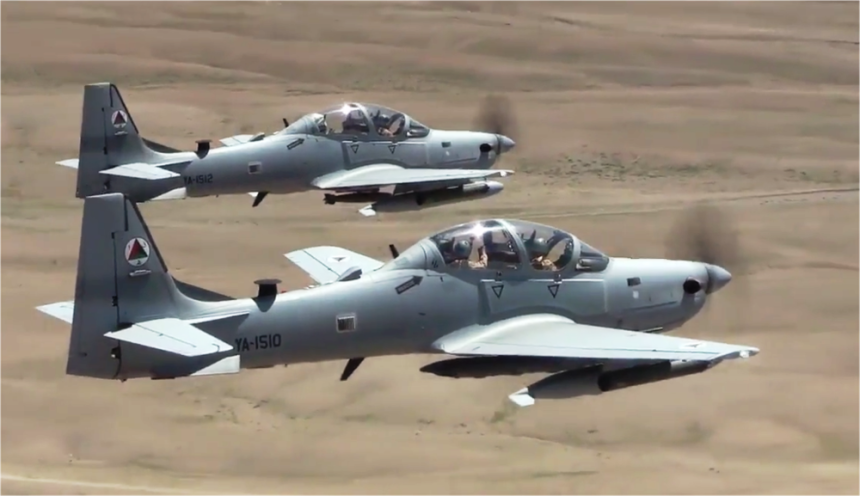For Nations Without Big Defense Budgets, Small Tactical Air Forces are the Trend.
Small, inexpensive, easy to operate combat aircraft with precision strike capability and long loiter times to provide close air support.
Versatile, scalable rotary wing assets that do double duty as gunships and utility/rescue helicopters.
Aircraft that can be disbursed to unimproved airfields and operated from roadways or even fields while being concealed on the ground.
In the era of the multi-billion dollar Gen 5+ superfighter and hundred-million dollar stealth bombers, is the low-cost counterinsurgency or “COIN” air force the next big defense trend? Many aircraft and systems manufacturers, along with their nation-clients, are betting “yes”.
As countries like Iraq and Afghanistan emerge from the long Global War on Terror and develop their own indigenous air forces the trend for local area defense and simple tactical air solutions is growing quickly. At the same time, strategic air combat capabilities, such as long-range heavy bombing, low observable long-range precision strike and long-range intelligence gathering have fallen to nations with much larger economies like the United States, Russia, UK, France and China.
The emerging industry in light, inexpensive, adaptable, scalable and integrated tactical air arsenals is booming, while massively expensive projects like the F-35 Joint Strike Fighter are under constant criticism and scrutiny from budget concerns.
Noted strategist, author and think-tank contributor Thomas PM Barnett, formerly a member of the Center for Naval Analyses and author of “The Pentagon’s New Map” opined, “a Leviathan force, used in a Leviathan manner, will rarely work.” Barnett was writing about the Global War on Terror and the use of global force to oppose and defeat a local insurgency. It is often like trying to remove a small tumor with a chainsaw.
Another key aspect of the growing trend in light tactical air power is that it empowers nation states with their own air force. The value of this is as much socio-psychological as it is tactical. Nations can fight their own wars, their own way, without the imposing presence of an aircraft carrier battle group off their coast.
Perhaps one of the best examples of a light, inexpensive counterinsurgency air force is Afghanistan. The Afghan Air Force operates two strike platforms, the Embraer A-29 Super Tucano, a Pratt & Whitney PT6A-68C turboprop powered, low wing, two-seat attack airplane and the MD Helicopters MD-530F Cayuse Warrior light utility/attack helicopter powered by Rolls Royce’s 650 shp 250-C30 engine. The two aircraft are well suited for ease of training and close air support.

Some reports suggest the aircraft may be a little “too” effective and easy to use. A February 8, 2017 story by Shawn Snow and Andrew DeGrandpre published in Military Times reports that, “the loss of innocent life caused by Afghan-initiated airstrikes doubled to 252 [in 2016], according to the U.N.” from the same period in the prior 2015 year. The report went on to say, “Afghanistan’s primary attack pilots are firing their weapons during four of every 10 combat missions, a rate more than three times greater than that of their U.S. Air Force counterparts.”
As a partial response to the frequency of airstrikes by Afghan assets and the exposure of civilians to collateral damage American officials working with the Afghan Air Force have begun to accelerate training for indigenous Afghan forward air controllers.
Regardless of the potential for reduced discretion when prosecuting ground targets (or, perhaps, because of it…) the demand for inexpensive counterinsurgency air support aircraft is booming. It has created heated contract competitions between manufacturers like Embraer and Beechcraft and introduced new brands into the marketplace like IOMAX and their highly capable, purpose-built Archangel counter-insurgency, close air support and precision strike aircraft.
The IOMAX Archangel is completely re-engineered from a basic agricultural (crop dusting) aircraft configuration. Instead of carrying pesticides or fertilizer it carries a full complement of precision guided air-to-ground weapons and highly effective countermeasures with a two-person crew. While the direct comparison is not at all fair, a country can purchase almost 20 of the IOMAX Archangel tactical aircraft with maintenance spares for the cost of one F-35A joint strike fighter. That is the size of the entire proposed acquisition of Embraer A-29 Super Tucanos for the Afghan Air Force. The IOMAX Archangel is already in service with the Royal Jordanian Air Force in the border patrol and interdiction role.

The conversation about low-cost, “bush-plane” style counter insurgency aircraft fitted with sophisticated data sharing, intelligence collecting and precision targeting capability is a fascinating one. For many countries that don’t need a strategic, long range, stealth air asset and can’t afford one, but do have to manage a persistent guerilla or insurgent threat, this new generation of “smart” light attack aircraft may just be the “Gen 5.25” combat aircraft of the next decade and beyond.
















